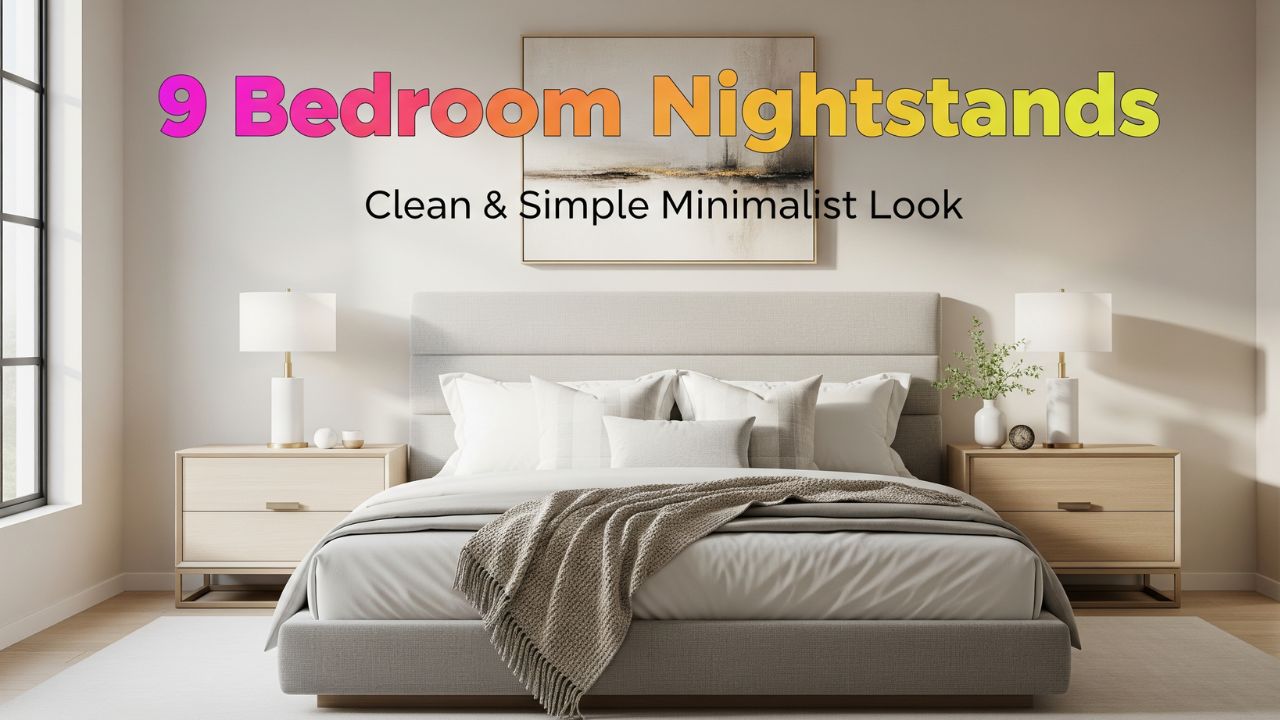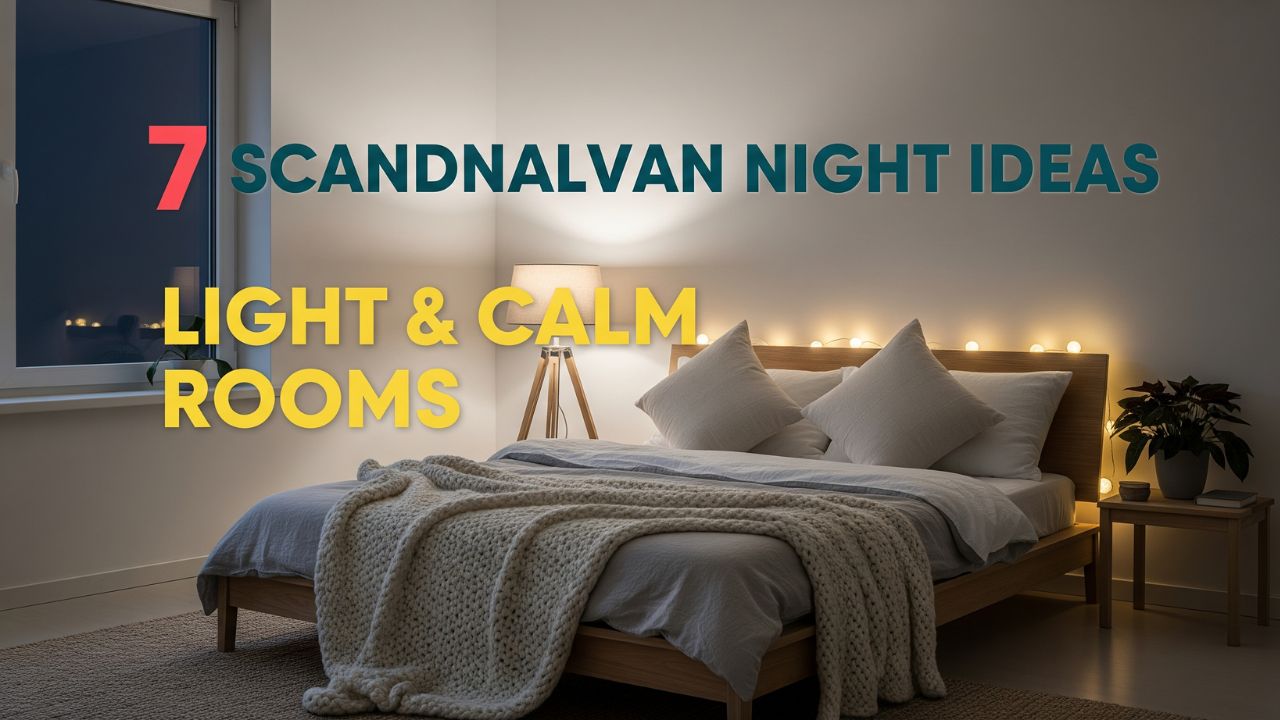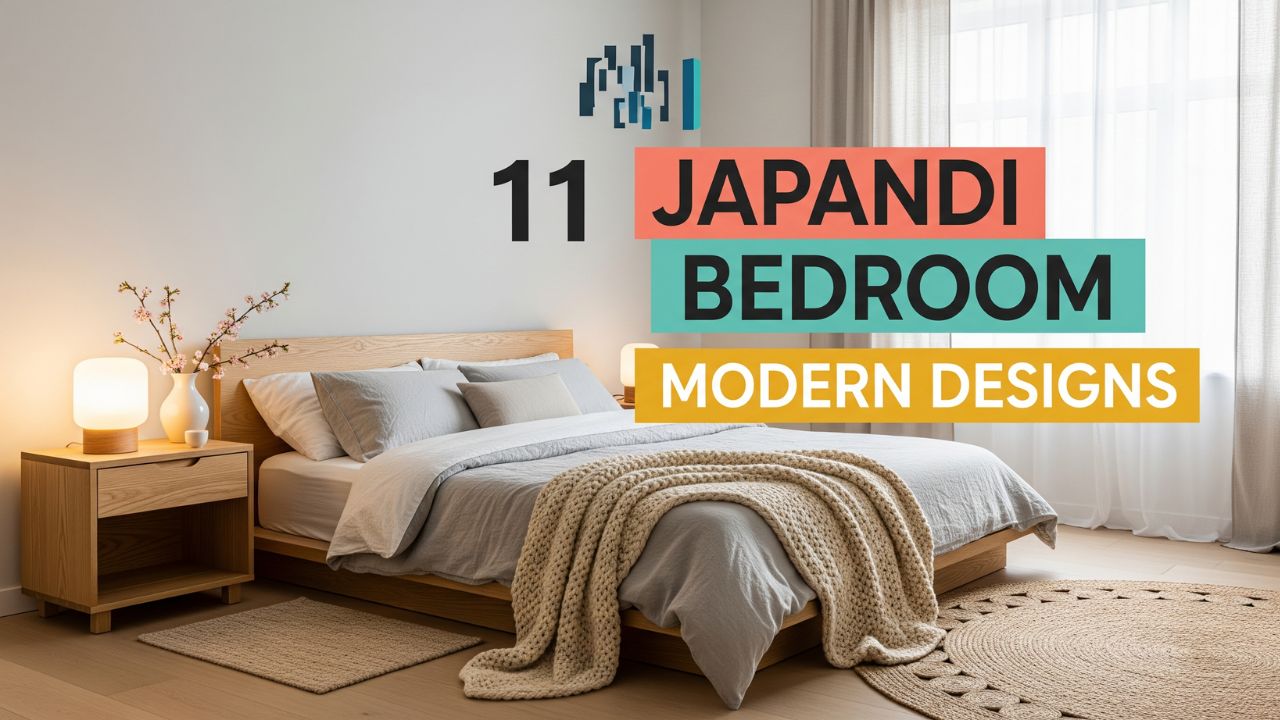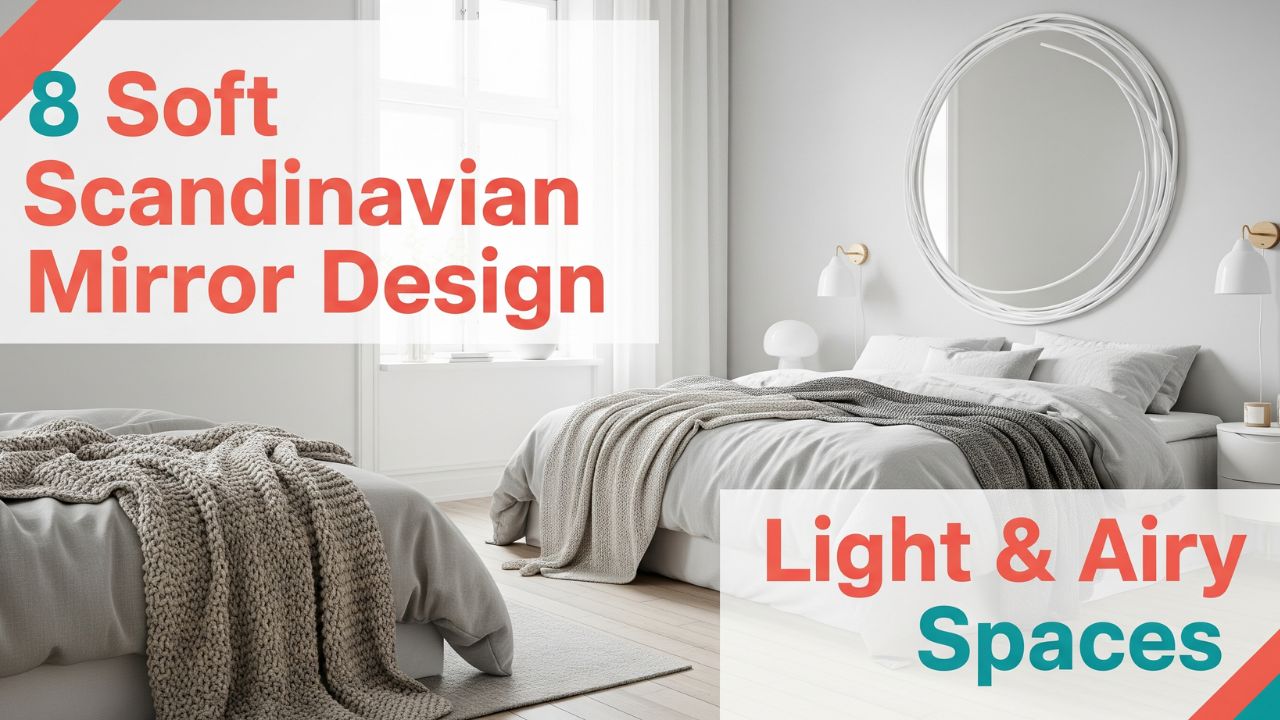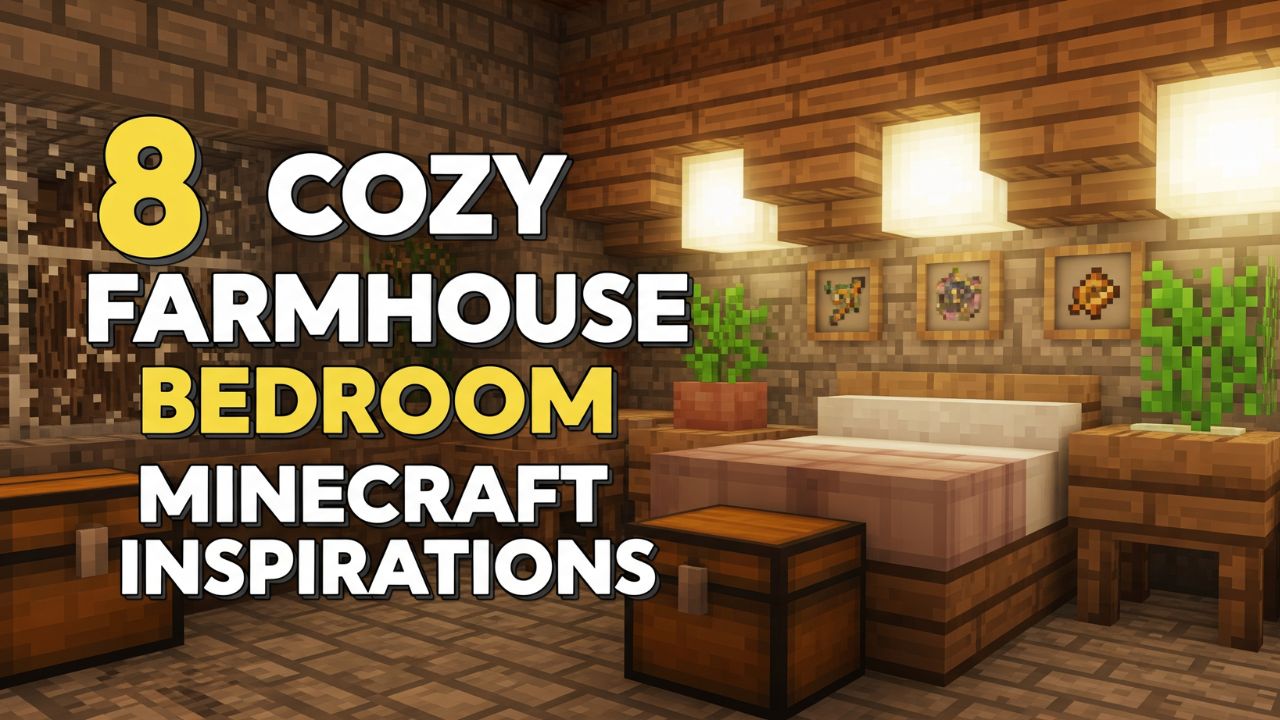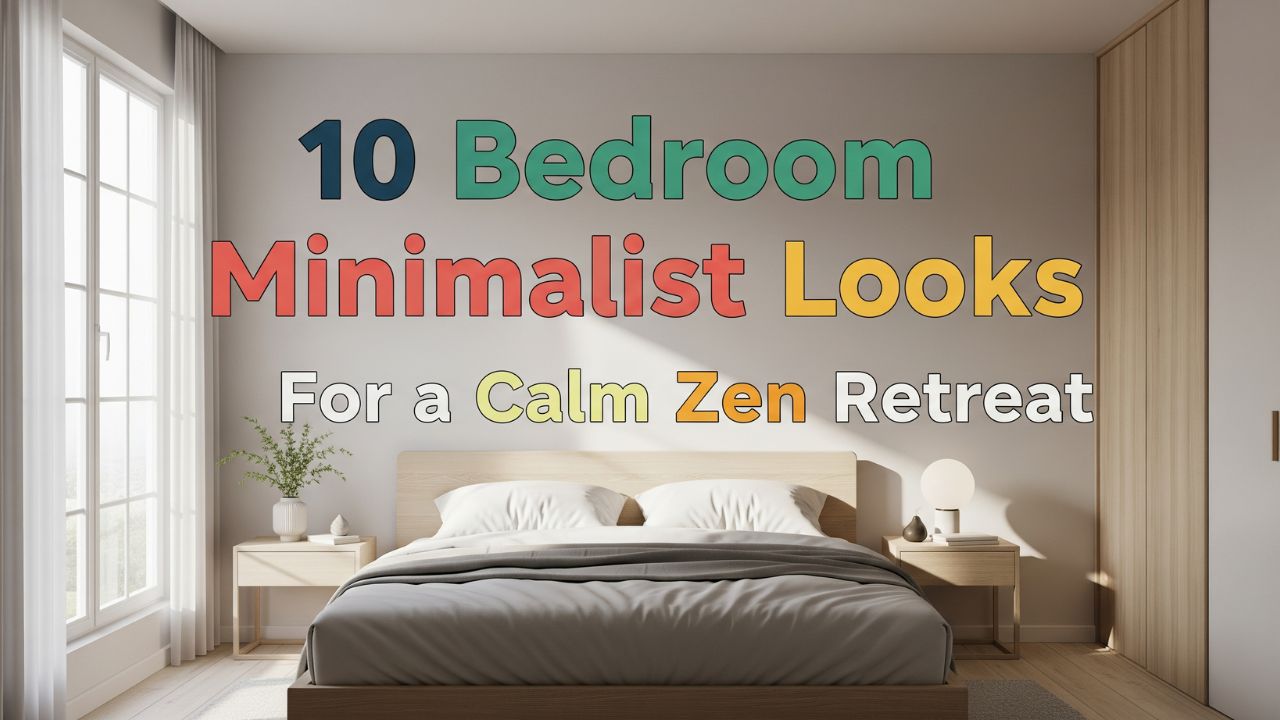The right lighting can do more than just illuminate a room; it can completely transform it. Your living room is the heart of your home, a space for relaxation, entertainment, and connection with loved ones. By thoughtfully layering light, you can create an atmosphere that feels warm, inviting, and perfectly suited to every moment.
This simple act can turn an ordinary space into a sanctuary of comfort and style. Forget thinking of lighting as just a functional necessity. It’s the most powerful tool you have to craft a mood, highlight your personality, and make your home truly feel like your own.
This guide will explore eleven living room lighting ideas designed to enhance ambiance. We’ll move beyond the single overhead fixture and dive into the art of combining different light sources to craft a space that is both functional and beautiful. You will learn how to layer lighting, select the right fixtures, and use light to showcase your home’s best features.
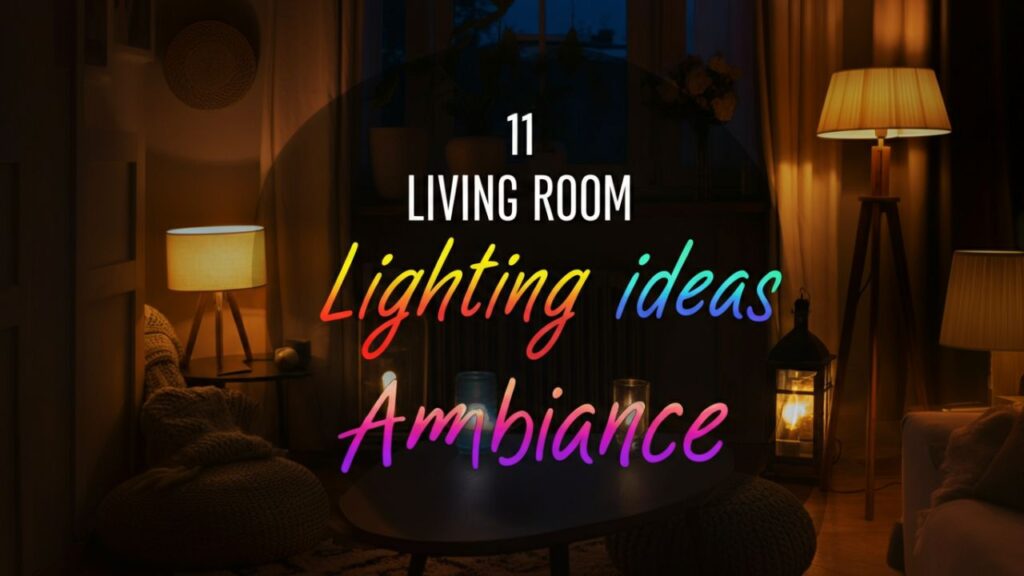
Table of Contents
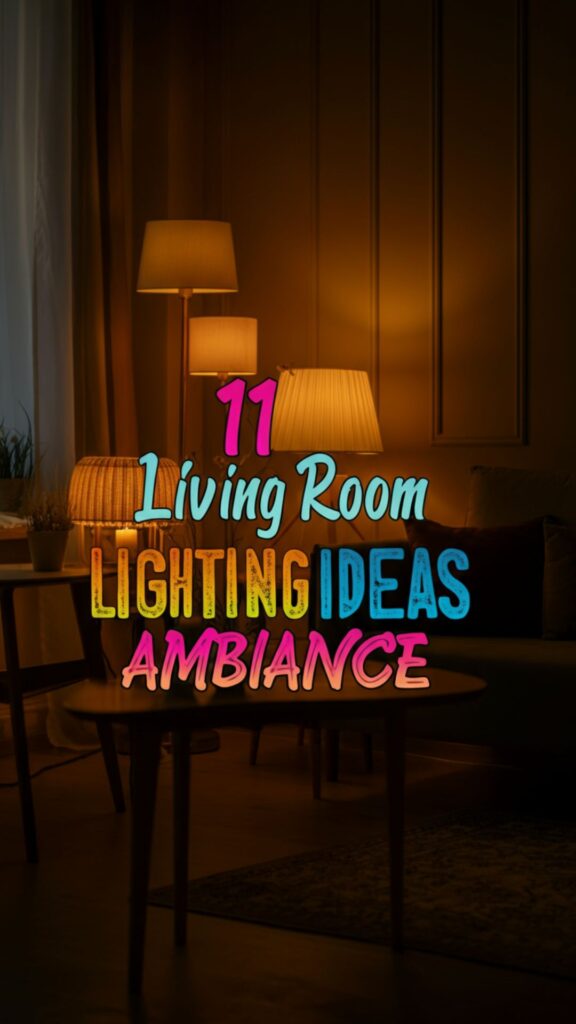
The Foundation of Ambiance: Layered Lighting
Before exploring specific fixtures, it’s crucial to understand the concept of layered lighting. This design principle involves using three distinct types of lighting—ambient, task, and accent—to create a balanced and versatile scheme that works in harmony.
- Ambient Lighting: This is the general, overall illumination of the room. It’s the foundational layer, often provided by ceiling fixtures like chandeliers or recessed lights, that allows you to move around safely and comfortably. Think of it as the substitute for natural daylight.
- Task Lighting: This is focused light directed at a specific area for activities such as reading, working on a puzzle, or playing a board game. Floor lamps, table lamps, and under-cabinet lights are common examples that make these activities easier on the eyes.
- Accent Lighting: This is directional light used to highlight architectural features, artwork, plants, or decorative objects. Track lighting, picture lights, and uplights are used to create visual interest, add depth, and draw attention to the things you love.
By combining these three layers, you gain complete control over the mood and functionality of your living room. You can brighten the whole space for a lively gathering, create a cozy reading nook for a quiet evening, or set a dramatic, low-lit mood for a movie night.
11 Best Living Room Lightning Ideas
1. Make a Statement with a Chandelier
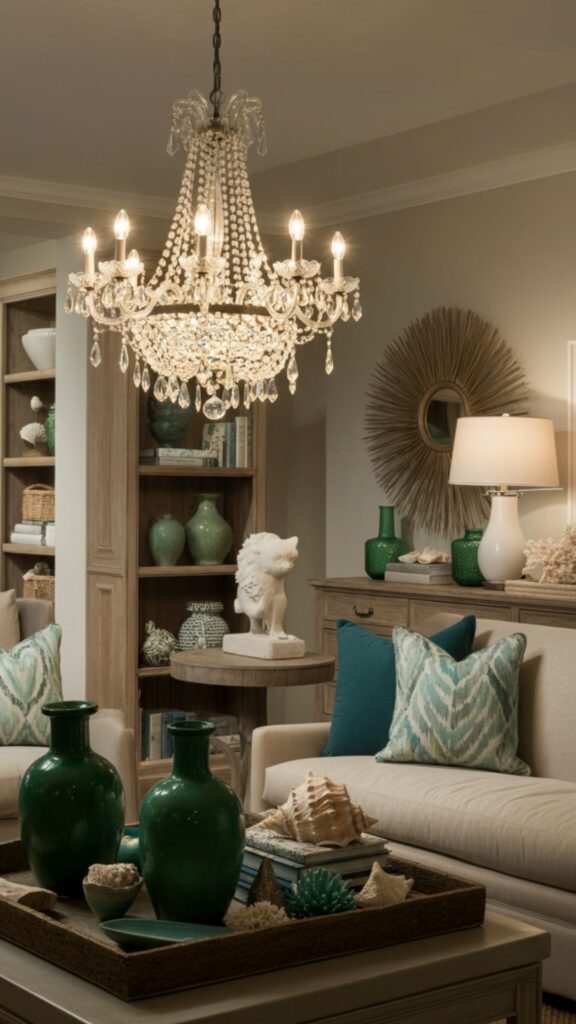
A chandelier is more than just a light source; it’s a centerpiece. It serves as the primary source of ambient light while doubling as a major decorative element that defines the room’s style and personality. It immediately draws the eye upward, adding a sense of grandeur.
Whether you prefer a grand crystal fixture for a touch of classic elegance or a modern sculptural piece for a contemporary feel, a chandelier sets the tone. When choosing one, size and placement are key to achieving the right effect without overwhelming the space.
A good rule of thumb is to add the room’s length and width in feet and convert that number to inches for the ideal diameter. For an 8-foot ceiling, the bottom of the fixture should hang about 7 feet from the floor, ensuring it doesn’t obstruct views or create a hazard.
Do You Know? The word “chandelier” comes from the French word chandelle, meaning candle. The earliest chandeliers, used in medieval times, were simple wooden crosses with spikes to hold candles, which were hoisted to the ceiling on a rope to illuminate great halls.
2. Embrace Flexibility with Track Lighting
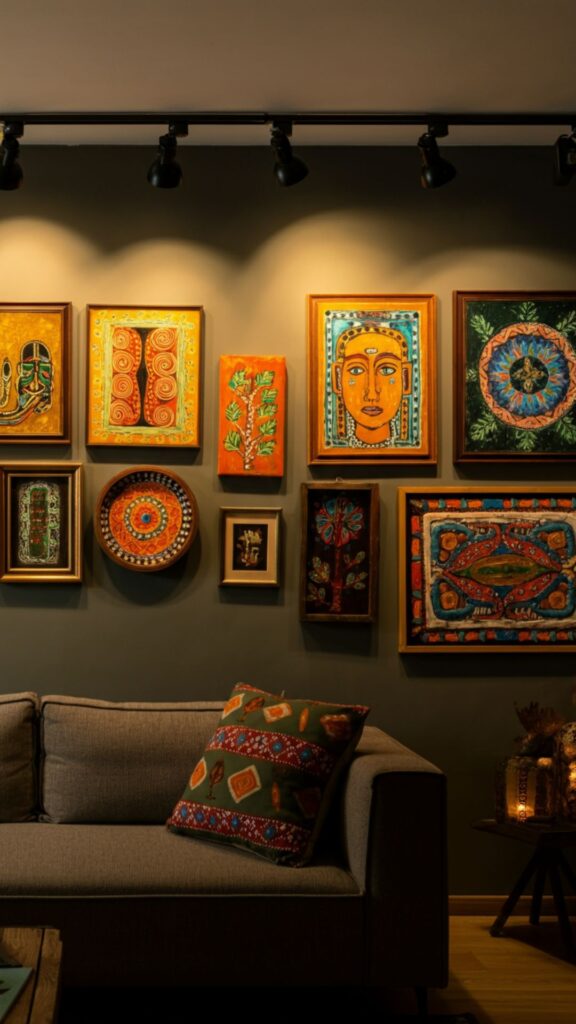
Track lighting has shed its dated reputation and reemerged as a highly versatile and modern solution for any living room. It consists of a series of adjustable light heads mounted on a linear track, allowing you to direct light exactly where you need it with precision.
This makes it a fantastic tool for both accent and task lighting. Use track lighting to wash a wall in a soft glow, highlight a collection of art, or illuminate a dark corner that feels forgotten. It puts you in the director’s chair of your own lighting design.
With a wide variety of head styles and finishes available, from minimalist spots to decorative pendants, you can easily find a system that complements your decor. Modern systems can even be controlled via smart home apps, letting you adjust brightness and direction with a simple tap on your phone.
3. Add Warmth with Floor Lamps
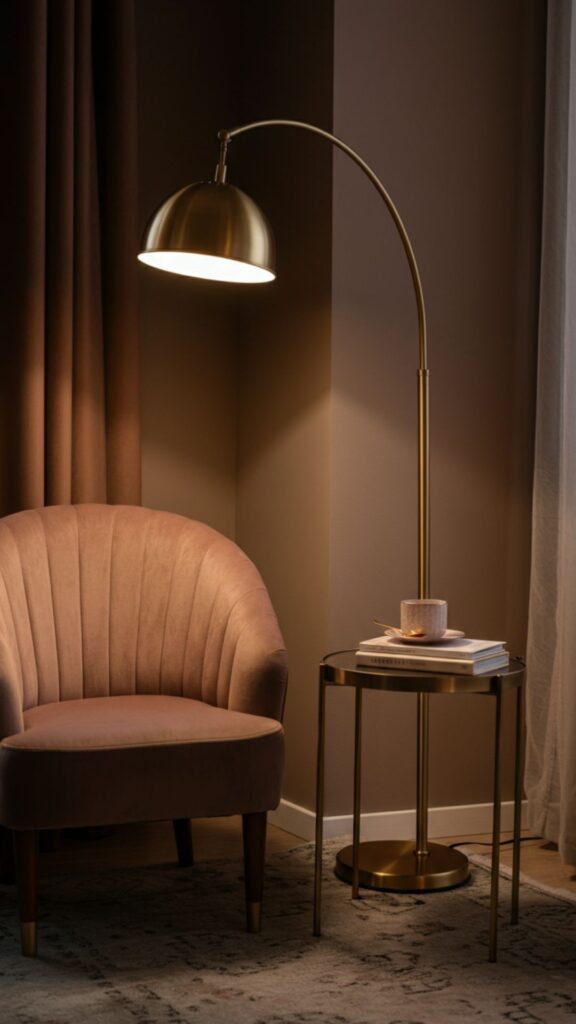
Floor lamps are the unsung heroes of living room lighting, working hard to fill in the gaps left by overhead fixtures. They are perfect for providing task lighting next to a sofa or armchair for reading, helping to prevent eye strain and create a comfortable spot to unwind.
Their height also helps to distribute light more evenly throughout the room, filling in shadows that ceiling lights can create in the corners. This layering effect makes a room feel more balanced and complete, adding a professional touch to your design scheme.
Consider an arc floor lamp to make a dramatic statement, its long arm reaching over a coffee table or seating area to provide light from an unexpected angle. For a more traditional approach, a tripod floor lamp adds a touch of mid-century modern flair and structural interest. Placing a floor lamp in a corner can also create an illusion of more space.
4. Create Cozy Nooks with Table Lamps
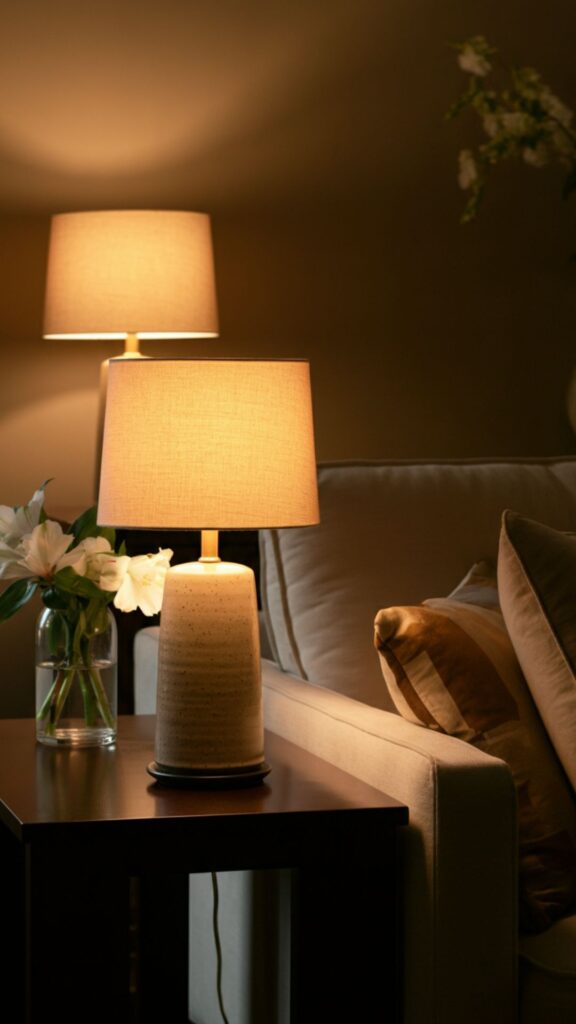
Table lamps are essential for creating intimate, cozy zones within your larger living room. Placed on end tables, consoles, or buffets, they provide soft, localized light that encourages relaxation and conversation. They are the easiest way to add a personal and decorative touch.
Think of table lamps as the jewelry of your room. When selecting one, consider both the base and the shade. The base can be a piece of art in itself, whether it’s a ceramic urn, a sleek metal column, or a natural wood form that adds texture and character.
The lampshade is equally important, as it shapes the light. A light-colored fabric shade will diffuse light for a soft, ambient glow, while a metal or opaque shade will direct light downward, creating a more focused pool of light perfect for a desk or side table.
Myths Busted: Bigger is Always Brighter
Many people believe that a higher wattage bulb automatically means better, more useful light. However, the quality of light is just as important as the quantity. It’s about creating a mood, not just maximizing lumens.A lower-wattage bulb with a warm color temperature (around 2700K) inside a well-placed table lamp can create a much more pleasant and inviting ambiance than a single, high-wattage overhead bulb that can feel harsh and clinical.
5. Get Modern with Recessed Lighting
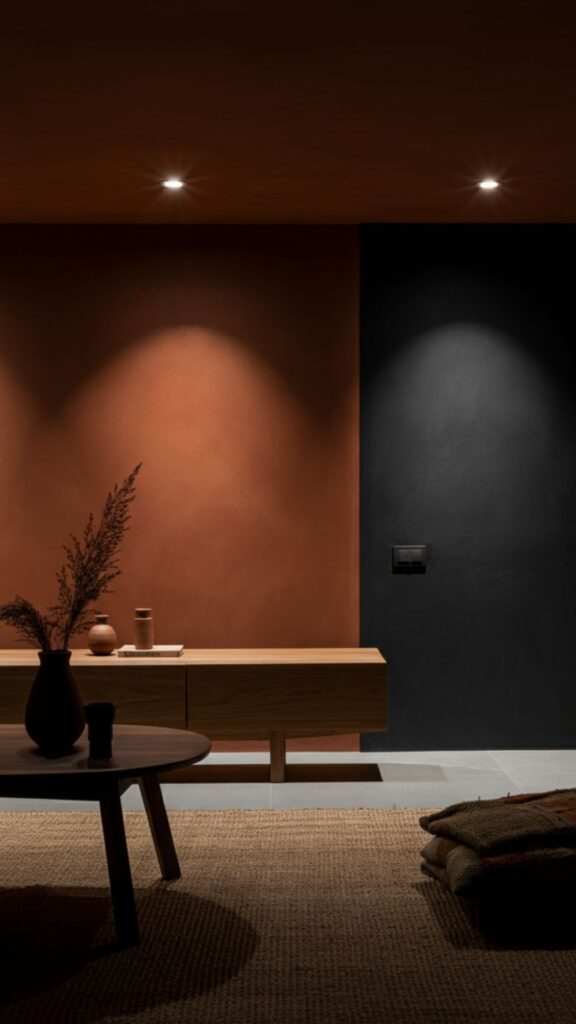
Recessed lights, also known as can lights or downlights, are fixtures installed directly into the ceiling. They offer a clean, minimalist look that provides excellent ambient light without taking up any visual space, making them ideal for rooms with lower ceilings.
When placed on a dimmer switch, they offer incredible control over the overall brightness of the room. This allows you to transition seamlessly from a bright, day-like environment to a soft, evening glow with the slide of a button.
For the best effect, use a “wall wash” technique by placing the lights about 18-24 inches from the wall. This casts a gentle cascade of light down the vertical surface, making the room feel larger and brighter. Avoid the “runway” effect of placing them in a straight line down the center of the room, which can feel harsh and institutional.
6. Showcase Art with Picture Lights
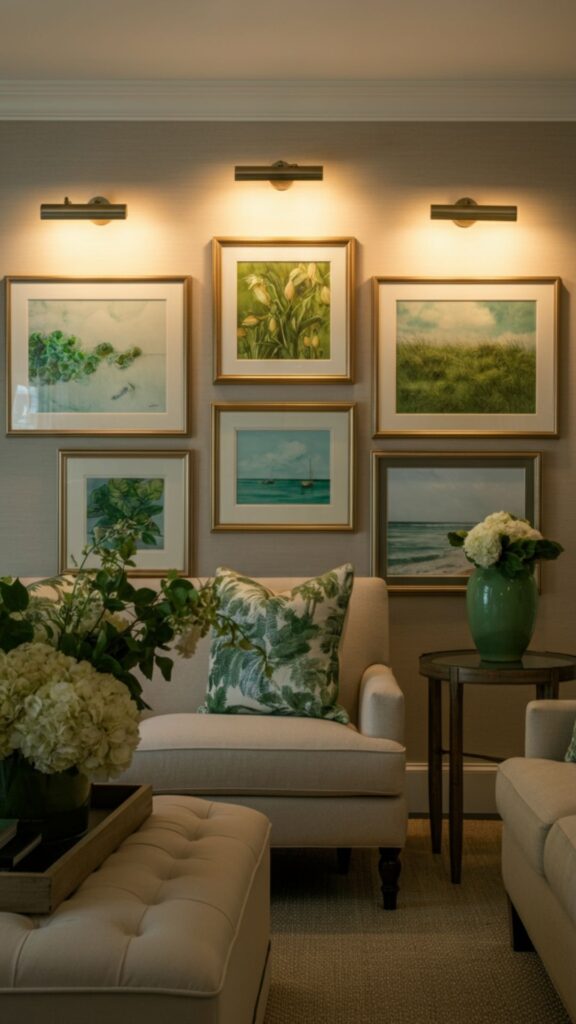
If you have cherished artwork, photographs, or a gallery wall, picture lights are a must-have addition. These small, dedicated fixtures mount directly above the piece, casting a focused beam of light that makes the art pop and come to life.
It’s a professional touch that elevates your decor and turns a simple wall into a sophisticated focal point. This technique tells guests that what is on your wall is important and worth looking at, adding a layer of intention to your design.
Modern picture lights often use LED technology, which is energy-efficient and emits very little heat, protecting your precious artwork from damage over time. They come in various finishes, like brass, black, and nickel, allowing you to match them to your frames or other fixtures.
7. Build in Drama with Cove Lighting
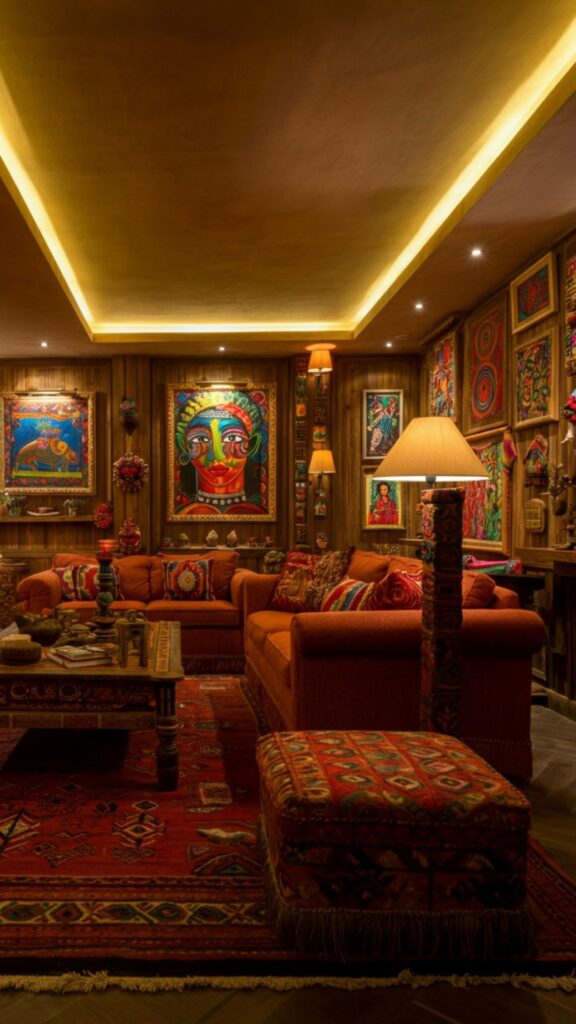
Cove lighting is an indirect lighting technique where fixtures are hidden within a ledge, shelf, or recess high up on the walls. The light is directed upward toward the ceiling, creating a beautiful, diffuse glow that seems to emanate from the architecture itself.
This technique is perfect for creating a soft, hotel-like luxury in your living room. It adds ambient light without any visible source, which gives the space a high-end, custom-designed feel and can make the ceiling appear higher than it is.
LED strips are the ideal choice for cove lighting, as they are easy to install, energy-efficient, and provide a continuous, seamless line of light. This method is incredibly effective for creating a serene and sophisticated atmosphere.
Do You Know? The Kelvin scale (K) is used to measure the color temperature of light. For a cozy, warm ambiance in a living room, look for bulbs in the 2700K to 3000K range. This produces a soft, yellowish light similar to a traditional incandescent bulb or candlelight.
Light around 4000K is a neutral white, while 5000K and above is a cool, bluish light that mimics daylight. This cooler light is better suited for office, garage, or workshop environments where focus and task visibility are paramount.
8. Layer in Playful Sconces
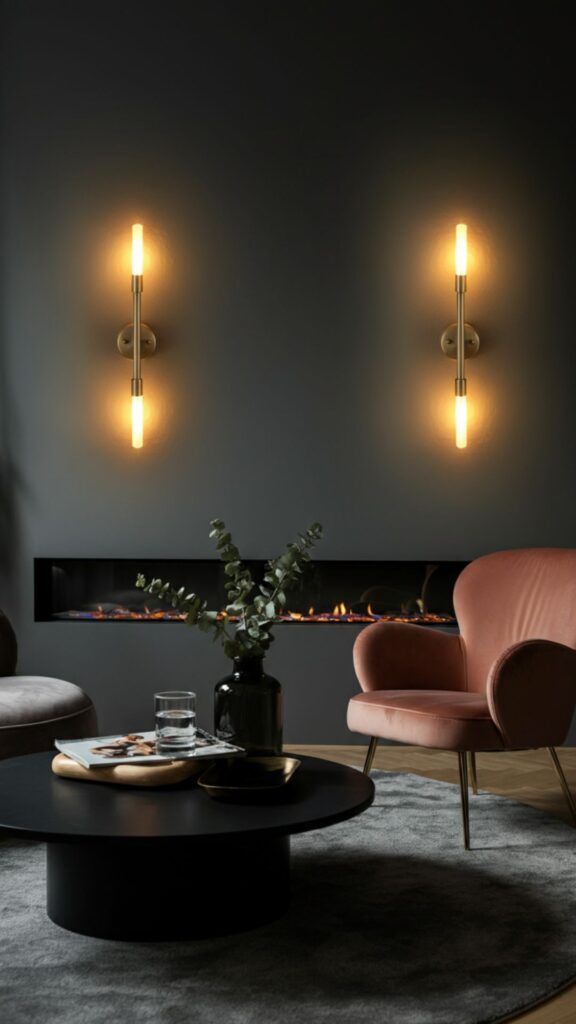
Wall sconces are fixtures that mount directly to the wall, providing both ambient and accent light at a different height than other fixtures. They add a layer of light at eye level, which helps to create a more human-scale and inviting atmosphere in larger rooms.
They are incredibly versatile and can be used to flank a fireplace, frame a doorway, or illuminate a hallway leading into the living room. Sconces work beautifully to add symmetry and a touch of formal elegance to a space.
Sconces come in a vast array of styles, from traditional candle-style fixtures to ultra-modern LED designs. An uplight sconce will cast light toward the ceiling for a gentle glow, while a downlight sconce is better for highlighting features below or providing a path of light.
9. Use Pendants for Targeted Style
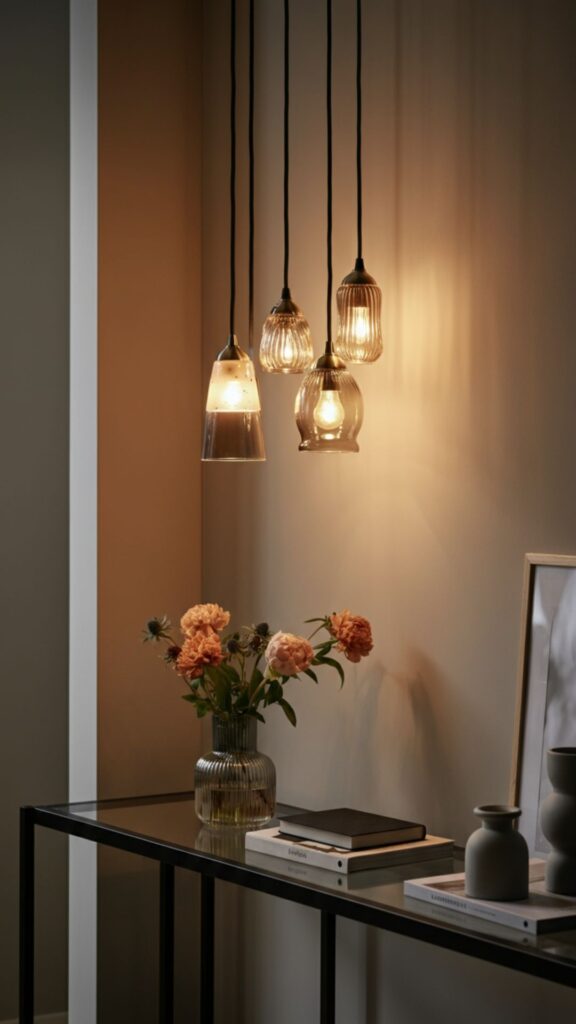
While often found over kitchen islands, small pendant lights can be a stylish and unexpected addition to a living room. Instead of a single, large chandelier, consider hanging a cluster of small pendants in a corner or a pair of pendants over a console table.
This creates a unique visual feature and provides focused task lighting in a decorative way. This approach is especially effective in rooms with high ceilings, as it helps to bring the scale of the room down to a more intimate and cozy level.
Choose pendants with interesting shapes, materials, or colors to add a dose of personality. Glass, woven rattan, or metallic pendants can all serve as functional art, contributing to your overall design theme while lighting a specific zone.
10. Install Dimmer Switches Everywhere
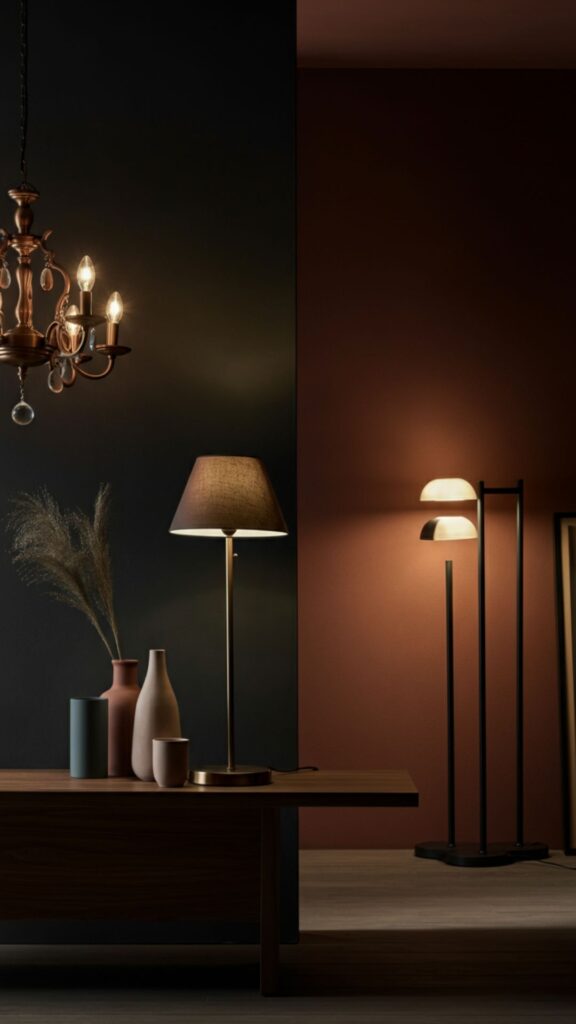
If there is one single thing you can do to revolutionize your living room lighting, it’s installing dimmer switches. Dimmers give you the power to adjust the intensity of your lights, allowing you to go from bright and functional to low and atmospheric in seconds.
This flexibility is the absolute key to creating true ambiance. It allows one room to serve multiple purposes, from a bright playroom for kids during the day to a romantic, softly lit space for adults in the evening.
Nearly every type of lighting, from chandeliers to recessed lights and even some lamps, can be put on a dimmer. It is a relatively inexpensive upgrade that offers a massive return in terms of mood control. For ultimate convenience, consider smart dimmers that can be controlled from your phone or with voice commands.
11. Don’t Forget Natural Light
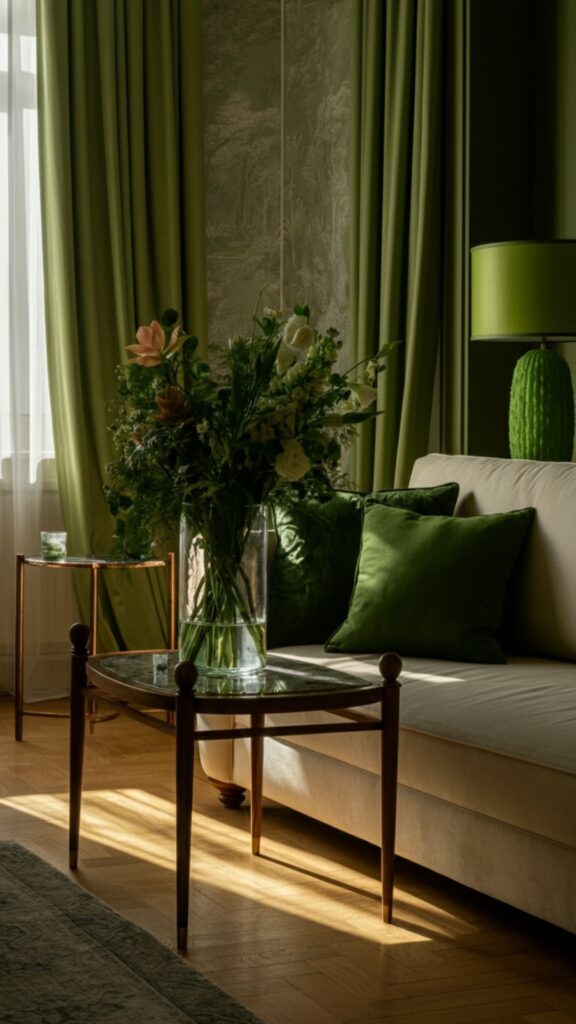
The final, and perhaps most important, source of light in your living room is the sun. During the day, nothing beats the beauty, warmth, and health benefits of natural light. Maximize it by keeping windows clean and as unobstructed as possible.
Use sheer or light-filtering curtains that allow light to stream through while still providing a degree of privacy. Heavy, dark drapes can be beautiful, but make sure you can pull them fully aside to let the daylight in.
Arrange your furniture to take advantage of the natural light. A reading chair placed by a window can be a perfect daytime retreat. Mirrors are also a fantastic tool; placing a large mirror opposite a window will bounce light around the room, making it feel brighter, larger, and more open.
Conclusion: Crafting Your Perfect Atmosphere
Lighting is one of the most powerful and often overlooked tools in interior design. By layering ambient, task, and accent lighting, you can create a living room that is not only well-lit but also rich in atmosphere, character, and personality. Each fixture plays a vital role.
From the grand statement of a chandelier to the subtle glow of a hidden cove light, every choice contributes to the overall composition. The best designs feel intentional, with each light source serving a clear purpose, whether it’s to help you read or to make your favorite painting shine.
Start by assessing your current lighting and identify what’s missing. Do you need a better light for reading? Could your room use a central focal point?
By strategically implementing these eleven ideas and putting everything on a dimmer, you can design a dynamic and inviting space that adapts to your every need. It’s time to let your living room truly shine.
Frequently Asked Questions (FAQs)
What is the most important type of lighting for a living room?
There isn’t one “most important” type; the key is to use a combination of lighting layers. However, ambient lighting is the foundation. It provides the general illumination for the room, making it safe and functional. Start with a good source of ambient light, like a chandelier or recessed lighting, and then add task and accent lights to build atmosphere and functionality.
How do I choose the right size chandelier for my living room?
A simple guideline is the “length + width” rule. Measure your room’s length and width in feet, add those two numbers together, and the sum is the ideal diameter for your chandelier in inches. For example, a 12-foot by 15-foot room (12 + 15 = 27) would look great with a chandelier that is approximately 27 inches in diameter.
What is the best light color for a cozy living room ambiance?
For a warm, inviting, and cozy atmosphere, look for light bulbs with a color temperature between 2700K and 3000K. This range produces a soft, yellowish light similar to that of a traditional incandescent bulb or candlelight, which is perfect for relaxation and creating a comfortable mood.
Can I mix different metal finishes in my lighting fixtures?
Absolutely! Mixing metals (like brass with matte black, or chrome with nickel) is a popular design trend that adds depth and visual interest. The key is to do it with intention. Try to have at least one common element, like a similar style or shape, to tie the fixtures together and ensure the look feels curated, not chaotic.
How many light sources should a living room have?
There’s no magic number, as it depends on the size and use of your room. However, a good starting point for an average-sized living room is to aim for 3 to 5 light sources. This might include a main ceiling fixture (ambient), a floor lamp (task), and a couple of table lamps or sconces (task/accent). The goal is to distribute light evenly and create multiple zones of interest.

